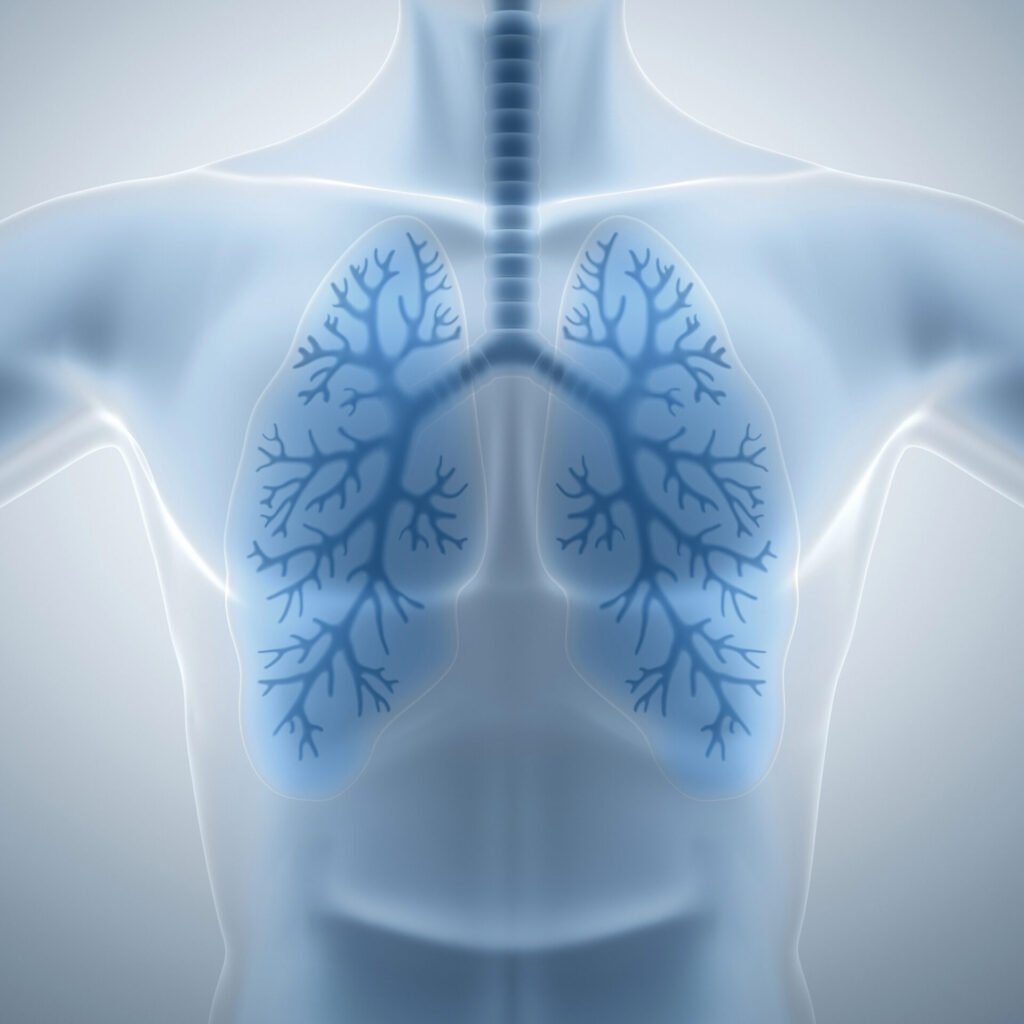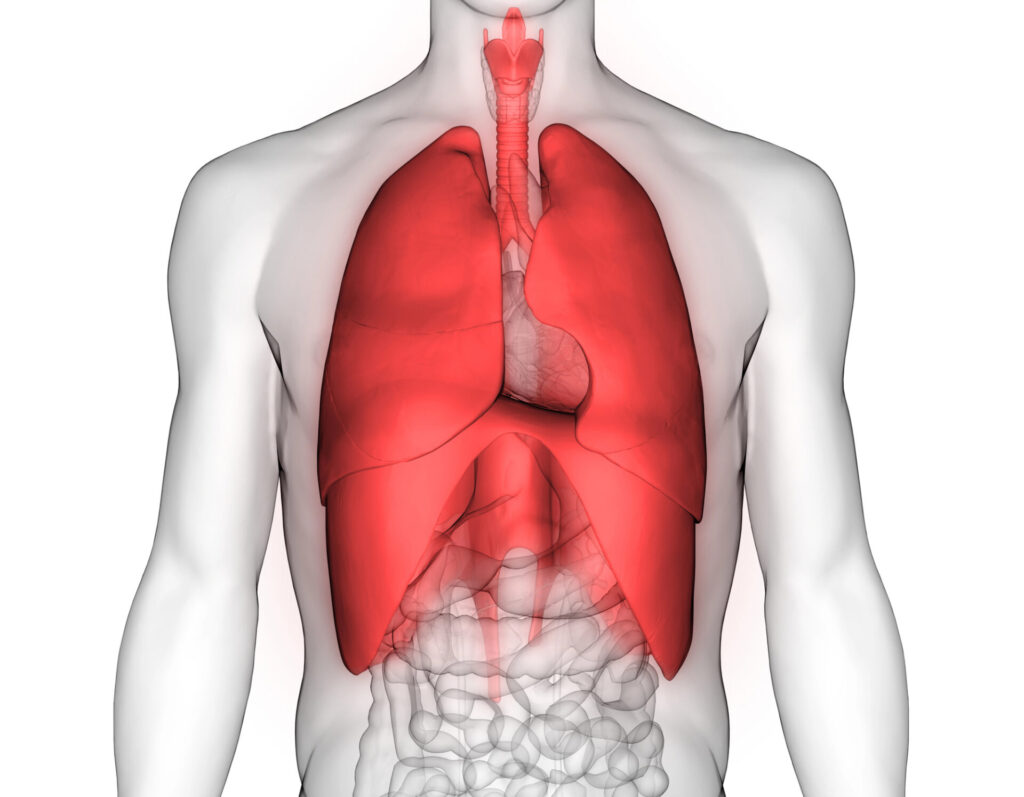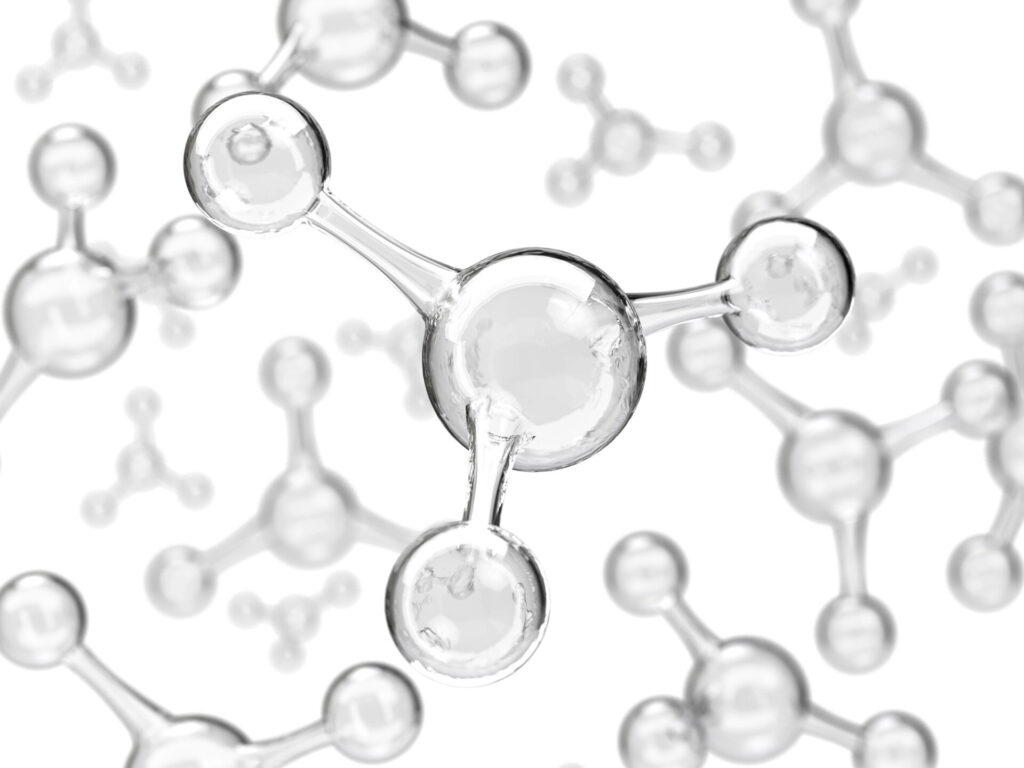The link between mitochondrial fitness and women’s health—and how to craft a strategic, science-backed protocol to protect your patients across all ages and life stages.
Women have specific and distinct health needs that differ, often dramatically, from those of men—and their needs change significantly across various ages and life stages. At the cornerstone of these is mitochondrial function, especially relevant for women. A personalized protocol that blends diet, lifestyle and science-backed supplements can preserve mitochondrial fitness and protect women across their lifespans. Here’s what the research shows.
Beyond energy: the far-reaching role of mitochondria.
Mitochondria, the power plants of the cells, are responsible for generating adenosine triphosphate (ATP), the primary energy currency required for cellular activities. But their function isn’t limited to energy production: mitochondria are central to a range of processes that influence overall health, including cell signaling and regulation, calcium homeostasis, thermogenesis, apoptosis. They’re also involved in the synthesis of hormones and neurotransmitters, as well as the coordination of activity across other cellular components. and mitochondrial dysfunction has profound impacts on the whole system.1, 2, 3, 4, 5
Because of their participation in cellular respiration and the production of reactive oxygen species (ROS), mitochondria are susceptible to damage. mtDNA is particularly vulnerable, since it lacks protective histone-like proteins found in nuclear DNA and has a poor capacity for DNA repair. This combination of excessive oxidative stress exposure and limited repair mechanisms makes mitochondria, especially their DNA, highly prone to mutations and dysfunction, which can lead to cellular damage and the development of disease.6, 7, 8, 9, 10
A number of modern influences, including stress, poor diet, sedentary lifestyle, insufficient sleep, environmental toxins and other factors drive ROS and threaten mitochondria. Additionally, aging is associated with increased oxidative stress and declines in mitochondrial integrity. Over time, chronic exposure to oxidative stress damages mtDNA, proteins and lipids, which disrupts mitochondrial and cellular function and impacts an array of physiological processes.11, 12, 13, 14, 15
Supporting women’s mitochondrial health.
Given their critical role in hormone regulation and energy-intensive activities like fertility, pregnancy and cardiovascular function, mitochondrial health is especially important for women. Different ages and life stages, from preconception through post menopause, are characterized by changes in cellular needs related to reproductive biology, hormonal cycles and menopause. Mitochondria fuel the high-energy demands of egg development, embryo formation and the cardiovascular system. They’re also involved in synthesizing estrogen and other sex hormones, influencing mood and cognition and protecting against age-associated disease. Mitochondrial dysfunction impairs cellular energy production—with significant consequences for fertility, pregnancy, menopause, cardiovascular wellness, and healthy aging and vitality.
A growing body of evidence highlights the efficacy of natural interventions for preserving mitochondria. Low-glycemic regimens, whole-foods diets rich in plants and antioxidants, caloric restriction and intermittent fasting appear to shield mitochondria from oxidative damage and improve their function, and low-carb or Keto diets blunt oxidative stress, amplify ATP production and promote mitochondrial biogenesis. Increased physical activity has been shown to delay mitochondrial decline, and some research suggests endurance exercise and high-intensity interval training enhance cellular energy and protect against age-related mitochondrial impairments. And lifestyle interventions like stress-management techniques and sleep optimization are linked with reduced oxidative stress and improved mitochondrial function.16, 17, 18, 19, 20, 21, 22, 23, 24, 25
Along with diet and lifestyle, certain foundational supplements are known to protect against oxidative stress and preserve mitochondria. CoQ10 in particular is critical for maintaining mitochondria and addressing specific factors relevant to women’s health. Generic CoQ10 supplements occur as ubiquinone, which must be converted to ubiquinol, the active form. But the conversion process is inefficient and limited, and aging further interferes with the body’s ability to transform CoQ10. Ubiquinol supplements are bioidentical to naturally occurring ubiquinol; unlike conventional CoQ10 supplements, don’t require conversion and are significantly more bioavailable—important for women at any age or stage of life. In studies, ubiquinol supplements were two times better absorbed than standard CoQ10 supplements, with clinical trials showing a five- to eight-fold increase in plasma ubiquinol levels.26, 27, 28, 29, 30, 31, 32, 33, 34
Research demonstrates ubiquinol’s potential for mitigating oxidative damage, enhancing mitochondrial function and benefitting women throughout the lifespan. Some highlights:
- Preconception and reproduction. Oocytes require significant energy for maturation and development, and a healthy egg with optimal mitochondrial function is better equipped to undergo successful fertilization. Oxidative stress and age affect oocyte numbers and quality, as well as damaging reproductive tissues critical for protecting and maturing oocytes. Mitochondrial dysfunction and oxidative stress are implicated in infertility and higher rates of miscarriage and developmental issues. By decreasing oxidative stress and enhancing mitochondrial function, ubiquinol has the potential to support fertility, oocyte development and healthy pregnancy.35, 36, 37, 38, 39, 40, 41, 42
- Menopausal and postmenopausal wellbeing. During menopause, fluctuations in hormones and lower estrogen levels are linked with amplified oxidative stress impacting mitochondrial fitness. Age-related declines in mitochondrial integrity and increased oxidative stress also worsen menopausal symptoms, disrupt mood and heighten the risk of other conditions. Ubiquinol has been shown to support overall health and wellbeing during and after menopause. In one study of menopausal women, 80 percent reported less irritability, sensitivity, stress, and mood swings after ubiquinol supplementation. In another trial, ubiquinol improved quality of life factors in postmenopausal women aged 45 to 55.43, 44, 45, 46, 47
- Cardiovascular health. Estrogen is involved in regulating oxidative stress and maintaining mitochondria. During perimenopause and menopause, decreased estrogen leaves women more vulnerable to oxidative stress, mitochondrial dysfunction, endothelial damage and heart disease. Ubiquinol supports the energy-intensive needs of the heart, protecting mitochondria and reducing the risk of cardiovascular conditions. In studies, ubiquinol supplementation increased plasma levels of ubiquinol, associated with favorable cardiovascular biomarkers. Other research suggests ubiquinol supplementation facilitates proper vasodilation, enhances nitric oxide production, shields LDL cholesterol from oxidation and improves endothelial health. Additionally, ubiquinol is known to replenish CoQ10 depleted by cholesterol medications—an important consideration for patients taking statins.48, 49, 50, 51, 52, 53, 54, 55, 56, 57
- Brain health. Estrogen plays a crucial neuroprotective role during aging, in part through its positive impact on mitochondrial metabolism, and declining estrogen after menopause may accelerate neurodegenerative disorders in women. In studies, low estrogen has been linked with reduced antioxidant defenses and increased oxidation in the brain. And impaired mitochondrial function is widely implicated in brain aging, cognitive disorders and neurodegenerative disease. Ubiquinol’s ability to decrease oxidative stress and promote mitochondrial energy production may protect the brain from decline during aging, enhance cognitive function and lessen the risk of neurodegenerative disorders.58, 59, 60, 61, 62, 63, 64
- Healthy aging, wellness and vitality. The natural process of aging is associated with accumulated mtDNA mutations, excessive ROS, impaired cellular activities and mitochondrial damage. This vicious cycle results in reduced ATP production, diminished vitality and accelerated aging. Mitochondrial dysfunction is a common hallmark across age-related conditions, including cardiovascular disease, metabolic disorders and cognitive decline. Low mitochondrial function in skeletal muscles is also associated with decreased muscle strength and mobility and increased disability. Studies link total CoQ10 status and plasma ubiquinol levels with better physical functioning and muscle health in older adults, and supplementing with ubiquinol can protect mitochondria, preserve physical function, enhance vitality and increase resilience against diseases of aging.65, 66, 67, 68, 69, 70, 71, 72
References:
- Casanova A et al. Mitochondria: It is all about energy. Front Physiol. 2023 Apr 25;14:1114231.
- Osellame LD et al. Cellular and molecular mechanisms of mitochondrial function. Best Pract Res Clin Endocrinol Metab. 2012 Dec;26(6):711-23.
- Adebayo M et al. Mitochondrial fusion and fission: the fine-tune balance for cellular homeostasis. FASEB J. 2021;35(6):e21620.
- Javadov S et al. Mitochondria in Health and Diseases. Cells. 2020 May 9;9(5):1177.
- Chen W et al. Mitochondrial dynamics in health and disease: mechanisms and potential targets. Signal Transduct Target Ther. 2023 Sep 6;8(1):333.
- Srivastava S. The Mitochondrial Basis of Aging and Age-Related Disorders. Genes (Basel). 2017 Dec 19;8(12):398.
- San-Millán I et al. The Key Role of Mitochondrial Function in Health and Disease. Antioxidants (Basel). 2023 Mar 23;12(4):782.
- Bratic A, Larsson NG. The role of mitochondria in aging. J Clin Invest. 2013; 123(3):951-7.
- Kowalczyk P et al. Mitochondrial Oxidative Stress-A Causative Factor and Therapeutic Target in Many Diseases. Int J Mol Sci. 2021 Dec 13;22(24):13384.
- Guo C et al. Oxidative stress, mitochondrial damage and neurodegenerative diseases. Neural Regen Res. 2013 Jul 25;8(21):2003-14.
- Bhatti JS et al. Mitochondrial dysfunction and oxidative stress in metabolic disorders – A step towards mitochondria based therapeutic strategies. Biochim Biophys Acta Mol Basis Dis. 2017 May;1863(5):1066-1077.
- Xu X et al. Mitochondria in oxidative stress, inflammation and aging: from mechanisms to therapeutic advances. Sig Transduct Target Ther. 2025; 10:190.
- Lee YH et al. Targeting Mitochondrial Oxidative Stress as a Strategy to Treat Aging and Age-Related Diseases. Antioxidants (Basel). 2023 Apr 15;12(4):934.
- Wang DK et al. Mitochondrial Dysfunction in Oxidative Stress-Mediated Intervertebral Disc Degeneration. Orthop Surg. 2022 Aug;14(8):1569-1582.
- Amorim JA et al. Mitochondrial and metabolic dysfunction in ageing and age-related diseases. Nat Rev Endocrinol. 2022 Apr;18(4):243-258.
- Putti R et al. Diet impact on mitochondrial bioenergetics and dynamics. Front Physiol. 2015 Apr 8;6:109.
- Kyriazis ID et al. The impact of diet upon mitochondrial physiology (Review). Int J Mol Med. 2022 Nov;50(5):135.
- Miller VJ et al. A ketogenic diet combined with exercise alters mitochondrial function in human skeletal muscle while improving metabolic health. Am J Physiol Endocrinol Metab. 2020 Dec 1;319(6):E995-E1007.
- Zhao Y et al. The neuroprotective effects of intermittent fasting on brain aging and neurodegenerative diseases via regulating mitochondrial function. Free Radic Biol Med. 2022 Mar;182:206-218.
- López-Lluch G et al. Calorie restriction induces mitochondrial biogenesis and bioenergetic efficiency. Proc Natl Acad Sci U S A. 2006 Feb 7;103(6):1768-73.
- Memme JM et al. Exercise and mitochondrial health. J Physiol. 2021 Feb;599(3):803-817.
- Sorriento D et al. Physical Exercise: A Novel Tool to Protect Mitochondrial Health. Front Physiol. 2021 Apr 27;12:660068.
- Han S et al. Association of sleep quality and mitochondrial DNA copy number in healthy middle-aged adults. Sleep Med. 2024 Jan;113:19-24.
- Hartmann C, Kempf A. Mitochondrial control of sleep. Curr Opin Neurobiol. 2023 Aug;81:102733.
- Richardson RB, Mailloux RJ. Mitochondria Need Their Sleep: Redox, Bioenergetics, and Temperature Regulation of Circadian Rhythms and the Role of Cysteine-Mediated Redox Signaling, Uncoupling Proteins, and Substrate Cycles. Antioxidants (Basel). 2023 Mar 9;12(3):674.
- Pallotti F et al. The roles of coenzyme Q in disease: direct and indirect involvement in cellular functions. Int J Mol Sci. 2021;23(1):128.
- Hernández-Camacho JD et al. Coenzyme Q10 Supplementation in Aging and Disease. Front Physiol. 2018 Feb 5;9:44.
- Aaseth J et al. Coenzyme Q10 supplementation – In ageing and disease. Mech Ageing Dev. 2021; 197: 111521.
- Pelton R. Coenzyme Q10: A Miracle Nutrient Advances in Understanding. Integr Med (Encinitas). 2020 Apr;19(2):16-20.
- Pravst I et al. Comparative Bioavailability of Different Coenzyme Q10 Formulations in Healthy Elderly Individuals. Nutrients. 2020 Mar 16;12(3):784.
- Hosoe K et al. Study on safety and bioavailability of ubiquinol (Kaneka QH) after single and 4-week multiple oral administration to healthy volunteers. Regul Toxicol Pharmacol. 2007 Feb;47(1):19-28.
- Bhagavan HN, Chopra RK. Plasma coenzyme Q10 response to oral ingestion of coenzyme Q10 formulations. Mitochondrion. 2007;7:S78–S88.
- Langsjoen PH, Langsjoen AM. Comparison study of plasma coenzyme Q10 levels in healthy subjects supplemented with ubiquinol versus ubiquinone. Clin. Pharmacol. Drug Dev. 2014;3:13–17.
- Kubo H et al. Orally ingested ubiquinol-10 or ubiquinone-10 reaches the intestinal tract and is absorbed by the small intestine of mice mostly in its original form. J Clin Biochem Nutr. 2023;72(2):101-6.
- Bentov Y, Casper RF. The aging oocyte––can mitochondrial function be improved? Fertil Steril. 2013 Jan;99(1):18-22.
- Zhu Z et al. Ovarian aging: mechanisms and intervention strategies. Med Review (2021). 2022 Nov;2(6):590–610.
- Agarwal A et al. The effects of oxidative stress on female reproduction: a review. Reprod Biol Endocrinol. 2012 Jun 29;10:49.
- Rodríguez-Cano AM et al. Nutrients, Mitochondrial Function, and Perinatal Health. Nutrients. 2020 Jul 21;12(7):2166.
- Mihalas BP et al. Molecular mechanisms responsible for increased vulnerability of the ageing oocyte to oxidative damage. Oxid Med Cell Longev. 2017; 4015874.
- Lin G et al. Clinical evidence of coenzyme Q10 pretreatment for women with diminished ovarian reserve undergoing IVF/ICSI: a systematic review and meta-analysis. Ann Med. 2024 Dec;56(1):2389469.
- Xu Y et al. Pretreatment with coenzyme Q10 improves ovarian response and embryo quality in low-prognosis young women with decreased ovarian reserve: a randomized controlled trial. Reprod Biol Endocrinol. 2018 Mar 27;16(1):29.
- Bentov Y et al. Coenzyme Q10 Supplementation and Oocyte Aneuploidy in Women Undergoing IVF-ICSI Treatment. Clin Med Insights Reprod Health. 2014 Jun 8;8:31-6.
- Doshi SB, Agarwal A. The role of oxidative stress in menopause. J Midlife Health. 2013 Jul;4(3):140-6.
- Lima T et al. Pleiotropic effects of mitochondria in aging. Nat Aging. 2022; 2(3):199-213.
- Wada H et al. Redox status of coenzyme Q10 is associated with chronological age. J Am Geriatr Soc. 2007 Jul;55(7):1141-2.
- Kaneka Internal Report. Real-life ubiquinol study on 200 postmenopausal women. Expansion Consulteam. 2024.
- Kinoshita T et al. The effects of long-term ubiquinol intake on improving the quality of life of community residents. Functional Foods Health Disease. 2016; 6(1):16-32.
- Zhao Y et al. Vascular nitric oxide: beyond eNOS. J Pharmacol Sci. 2015; 129(2):83-94.
- Moreau KL et al. Decline in endothelial function across the menopause transition in healthy women is related to decreased estradiol and increased oxidative stress. GeroScience. 2020 Aug 8;42(6):1699–1714.
- Sabbatinelli J et al. Ubiquinol ameliorates endothelial dysfunction in subjects with mild-to-moderate dyslipidemia: a randomized clinical trial. Nutrients. 2020;12(4):1098.
- Ernster L, Forsmark-Andrée P. Ubiquinol: an endogenous antioxidant in aerobic organisms. J Clin Invest. 1993;71(8):S60-5.
- Palacios S et al. “Clinical study to determine the efficacy of Coenzyme Q-10 on the quality of life in postmenopausal women.” Toko-Ginecología Práctica. 2019; 762: 19-23.
- Lee DS et al. Gamma glutamyl transferase and metabolic syndrome, cardiovascular disease, and mortality risk: the Framingham Heart Study. Arterioscler Thromb Vasc Biol. 2007;27(1):127-33.
- Dhingra R et al. Serum gamma glutamyl transferase and risk of heart failure in the community. Arterioscler Thromb Vasc Biol. 2010;30(9):1855-60.
- Onur S et al. Ubiquinol reduces gamma glutamyl transferase as a marker of oxidative stress in humans. BMC Res Notes. 2014;7:427.
- Onur S et al. Association between serum level of ubiquinol and NT-proBNP, a marker for chronic heart failure, in healthy elderly subject. Biofactors. 2015; 41(1):35-43.
- Zlatohlavek L et al. The effect of coenzyme Q10 in statin myopathy. Neuro Endocrinol Lett. 2012;33(Suppl 2):98-101.
- Lejri I et al. Mitochondria, Estrogen and Female Brain Aging. Front Aging Neurosci. 2018 Apr 27;10:124.
- Grimm A et al. Alzheimer’s disease, oestrogen and mitochondria: an ambiguous relationship. Mol Neurobiol. 2012 Aug;46(1):151-60.
- Shaw GA. Mitochondria as the target for disease related hormonal dysregulation. Brain Behav Immun Health. 2021 Sep 21;18:100350.
- Mandal PK et al. Brain oxidative stress: detection and mapping of anti-oxidant marker ‘Glutathione’ in different brain regions of healthy male/female, MCI and Alzheimer patients using non-invasive magnetic resonance spectroscopy. Biochem Biophys Res Commun. 2012 Jan 6;417(1):43-8.
- Rekkas PV et al. Greater monoamine oxidase a binding in perimenopausal age as measured with carbon 11-labeled harmine positron emission tomography. JAMA Psychiatry. 2014 Aug;71(8):873-9.
- Grimm A et al. Alzheimer, mitochondria and gender. Neurosci Biobehav Rev. 2016 Aug;67:89-101.
- Tian G et al. Ubiquinol-10 supplementation activates mitochondria functions to decelerate senescence in senescence-accelerated mice. Antioxid Redox Signal. 2014 Jun 1;20(16):2606-20.
- Navas P et al. The importance of plasma membrane coenzyme Q in aging and stress responses. Mitochondrion. 2007 Jun;7 Suppl:S34-40.
- Barcelos IP, Haas RH. CoQ10 and Aging. Biology (Basel). 2019 May 11;8(2):28.
- Phua QH et al. Mitochondria: A Potential Rejuvenation Tool against Aging. Aging Dis. 2024 Apr 1;15(2):503-516.
- Fischer A et al. Coenzyme Q10 status as a determinant of muscular strength in two independent cohorts. PLoS One. 2016;11(12):e0167124.
- Bloomer RJ et al. Impact of oral ubiquinol on blood oxidative stress and exercise performance. Oxid Med Cell Longev. 2012;2012:465020.
- de la Bella-Garzón R et al. Levels of plasma coenzyme Q10 are associated with physical capacity and cardiovascular risk in the elderly. Antioxidants (Basel). 2022;11(2):279.
- Peterson CM et al. Skeletal muscle mitochondria and aging: a review. J Aging Res. 2012;2012:194821.
- Kang C, Li Ji L. Role of PGC-1α signaling in skeletal muscle health and disease. Ann NY Acad Sci. 2012 Oct;1271(1):110-7.





